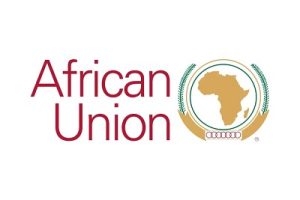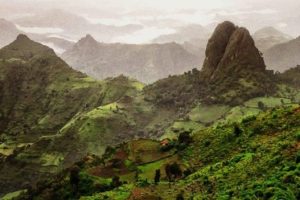
According to the latest edition of Africa Report, African cinema has fared good so far in the international film arena and the 10 best African films of the year are making strong showing at the most prestigious international film festivals. “From Sundance to Berlin, Cannes to Fespaco African films has received critical acclaims and buzz-worthy prizes. The report also gave, “a survey of the year in film so far, across the theatrical and streaming landscapes and presents 10 of the strongest titles to emerge.”
The African cinema is no more what it used to be in the early decades of the post-independence period. Like any aspect of life on the continent, African cinema has also grown and changed with change in the other aspect of African life and African reality. In the last few decades in particular, African cinema has emerged as a strong competitor with the other more developed cinemas in the world.
African actors, producers and writers have proved their mettles as highly talented and more importantly still, highly committed to the liberation of African cinema for the shackles of the past so that it could evolve along its own course and its own traditions.
Among the African films selected by the juries at these prestigious festivals, there is a number of selections based or inspired by African folk tales. As African Report put it, “In partnership with UNESCO, streaming giant Netflix selected young filmmakers from six different African countries for this anthology series of short films taking multiple spins on folktales common to their respective to yet fully communities.” African countries are well-endowed with many stories and folk tales that are not yet exploited not only in the African cinema tradition but also in literature and visual arts.
Speaking of folk stories, all African countries are rich in their oral cultures traditions. “African oral tradition is visible primarily through proverbs, folktales, songs, dances, customs, traditional medicines, religious practices and ancestral utterances.” Although Africa is rich in oral traditions and literature, only a few countries have worked hard to translate this wealth into visual media to revive and energize the spiritual life of their people.
Even African religions are not immune from the influence of folk traditions. “Traditional African religion is based on oral traditions, which means that the basic values and way of life are passed from elders to younger generation. These traditions are not religious principles but a cultural identity that is passed on through stories, myths and tales.”
Among the 10 best African films that were honored by the international jury are pictures from Kenya, Mauritania, Nigeria, South African Tanzania and Uganda. According to Africa Report, “the filmmakers were mentored and handed decent budgetary provisions to execute their projects in their local languages. The six interesting shorts make a case for preserving oral traditions through the visual medium.”
Similarly, Senegal, Mali and France have cooperated to produce a film by Ramata Toulaye Sy to make his feature debut entitled Banael & Adama which is a movie dealing with love story in rustic Senegalese village suffused with gorgeous imagery as well as commentary on community, tradition and the climate crisis.”
By the same token, Cameroon and French filmmakers cooperated in producing a very topical French film called, Le Spectre de Boko Haram, (The Specter of Boko Haram) which is described as, “ a visually striking account of the impact of the terror group Boko Haram as seen through the eyes of child victims and debuted at the Rotterdam film Festival in January where director Cyrielle Raingou won the festival’s top prize.”
American cinema, European cinema, Asian cinema, African cinema…these are not only geographic references but include the history of their rise and development as compared to cinematic developments elsewhere in the world. All cinema traditions are not similar due to historical, economic, political and artistic differences that shape their cinematic traditions.
When we talk or write about African cinema for instance, we primarily refer to cinema in sub-Saharan Africa compared to other cinemas in the world. According to a recent article dealing with the subject, “Compared to the other national cinemas in the world, African cinema can be said to be a recent phenomenon that for many countries within this region only began to materialize after independence in the 1960s.
Cinema like any other feature of a region or a country, displays variations in its level of development. Compared to European or American cinemas, African cinema can be less developed because of the factors we mentioned above. Even within the African continent, the cinema of one country is different from the cinema of another country in terms of development or importance.
It is a well-established fact that Nigerian cinema or the film industry, “is the largest in Africa in terms of volume, number of annual films, revenues and popularity.” Another feature of Nigerian cinema is that “it is the second largest industry in the world”. This makes us proud rather than envious because the Nigerian cinema is also African cinema and we have to learn for it to develop other African cinema in the continent.
On the other hand, Ethiopian cinema, which started a long time ago but stagnated for long decades before it recently gained momentum, is relatively less developed than Nigerian, South African, Egyptian or Cameroon’s cinema if we look at the metrics used for comparison.
Ethiopia is, like many African countries, rich not only in its oral traditions but also in its written story telling because the country has developed its own script many centuries ago. Unfortunately, Ethiopian filmmakers have not yet turned to these vast sources of inspiration to produced films based on Ethiopian folk tales or written traditional stories that reflect the wisdom, resilience and struggles and hopes of its people.
Why Ethiopia is retarded in this area might look paradoxical because the country has produced a number of talented filmmakers who seldom turned their attention towards using folk literature or stories as materials in their visual arts. Although Ethiopia was not colonized by the West, its film culture as well as it arts and literature in general have been influenced by Western traditions that draw their inspirations from contemporary urban lives and urban stories that lacked not only narrative originality but also authenticity or originality. By doing so they have borrowed heavily on Western film traditions that do not reflect Ethiopian realities and Ethiopian themes but represent caricatures of European or American themes and techniques that are largely imitated.
The fact that Ethiopian filmmakers or film writers have so far failed to explore and exploit Ethiopian traditional folk stories to produce authentically Ethiopian movies and could not so far participate in international film festivals is another sign of failure and an indication that our movies have not yet reached the high standards set by other African countries.
The only way to play catch up and bridge the yawning gap between Ethiopian and other African filmmakers is not by imitating the old Western stereotypes but by breaking new and original grounds whereby the stories, the storytellers and actors would all be Ethiopians or Africans. This in turn requires the courage and honesty to candidly accept our shortcomings and work harder to come closer to the high achievers that have recently shined at this year’s film festivals.
BY MULUGETA GUDETA
The Ethiopian Herald August 24/2023





